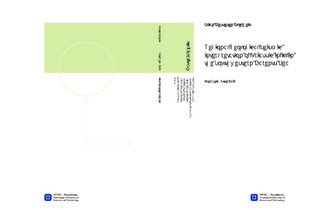| dc.description.abstract | The Barents Sea has been subject to increasing focus through the years due to the discoveries of e.g. Havis, Skrugard and Nordvarg, which show some of the potential of the area. Despite 30 years of exploration large parts of the Barents Sea are still considered as relatively new frontiers, and the geological history is still open to new or more thorough theories. In 2011 MultiClient Geophysical (MCG) shot a 2D seismic survey in the southwestern Barents Sea with the aim of creating a solid frame for tying future surveys. This study uses the data acquired by MCG to map the Triassic infill in the southwestern Barents Sea. The Triassic period has been described as a relatively calm period of regional subsidence, and this study aims on explaining the factors responsible for the Triassic infill.Through interpretation of the seismic lines and well tying, the Triassic deposits are divided in three; Sassendalen Group of Early to Mid Triassic age, Snadd For- mation of Mid to Late Triassic age and Fruholmen Formation of Late Triassic age. The basinal development of the area is described through construction and interpretation of seismic profiles and time-thickness maps.In Early Triassic time the southwestern Barents Sea received large amounts of sediments from the Ural Mountains in the east. Uplift of a NNE-SSW trending ridge from the Gardarbanken to western Loppa High in Permian?Early Triassic time divided the region in two subsiding areas. While the western basinal area was quite sheltered by the ridge, the eastern area received large amounts of sediments. In the upper part of Sassendalen Group seismic clinoforms show westward progra- dation onto the ridge. Snadd Formation represents a shift in Mid Triassic time. The ridge was inverted, and the area turned into a large, subsiding basin with the Loppa High area as depocentre. And in addition to the Baltic provenance area, general eastward thinning suggests a provenance area west of the southwestern Barents Sea. In the Nordkapp and Maud Basins as well as locally on the Bjarme- land Platform salt tectonics played an important role in altering accommodation space throughout the Triassic period. Fruholmen Formation is a very thin unit, but it is very similar to Snadd Formation. The uplift of the ridge that divided the region in Early to Mid Triassic times is related to Late Permian extension fromthe North Atlantic rifting system, and the inversion of the ridge resulted from a Triassic renewal of the rifting. | nb_NO |

